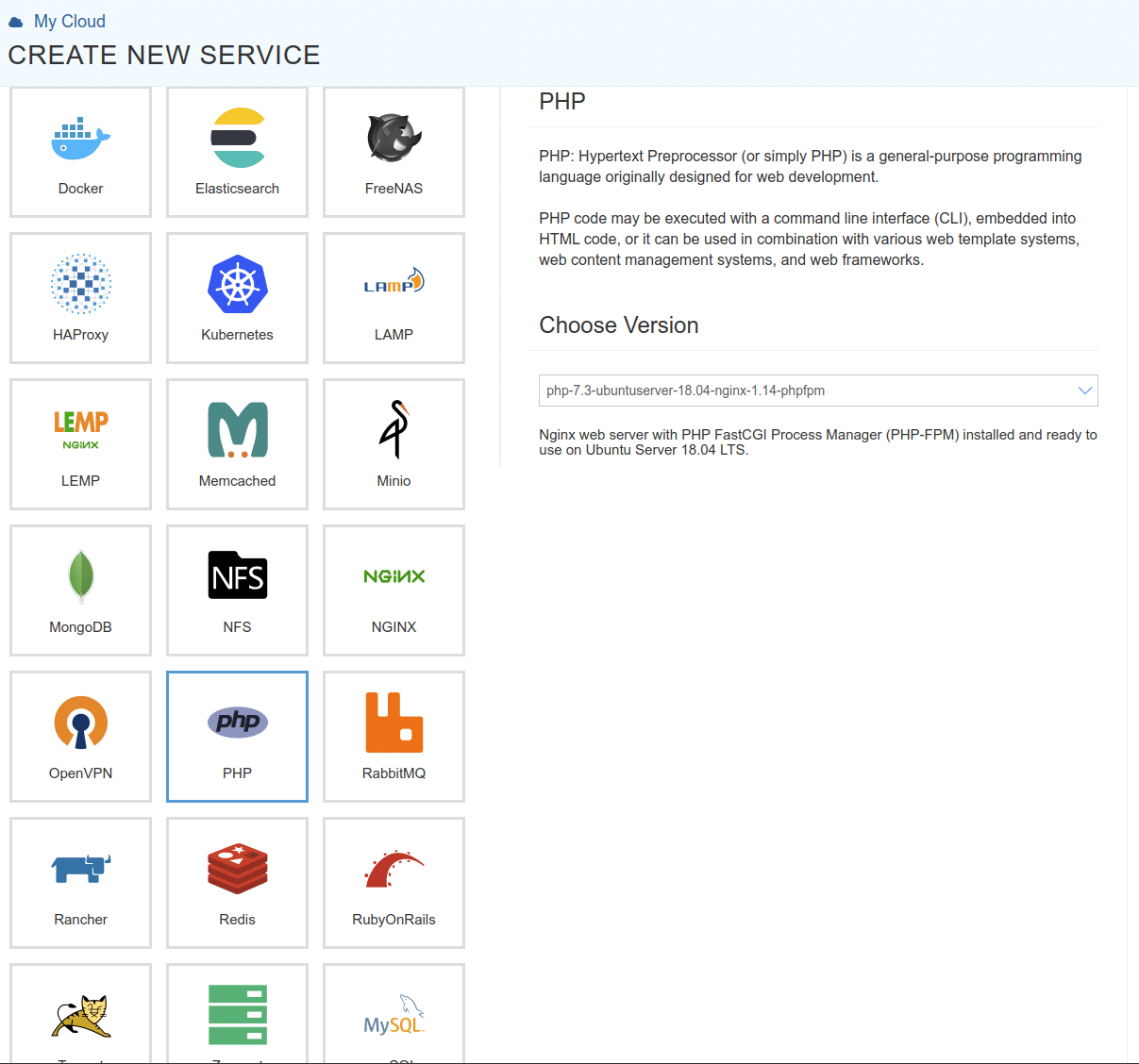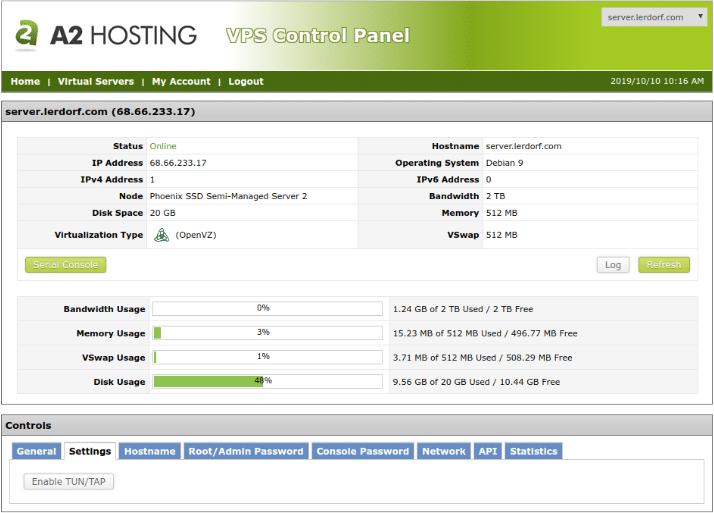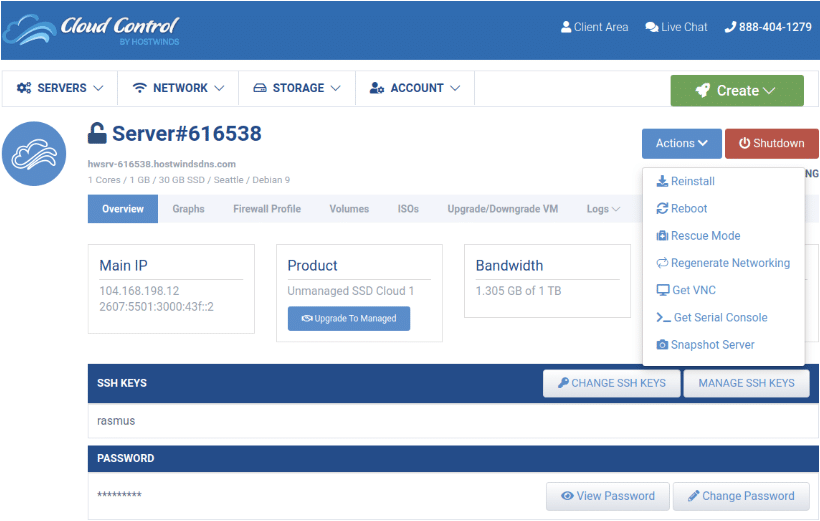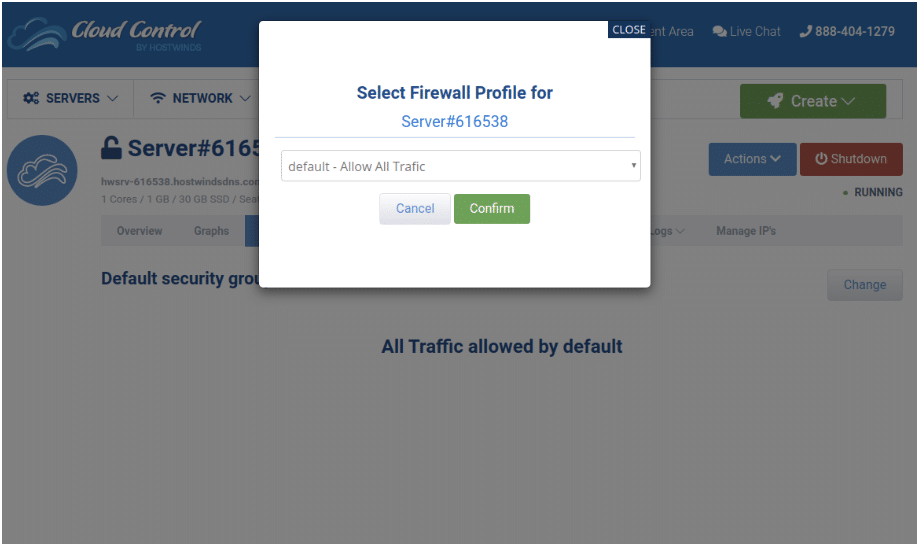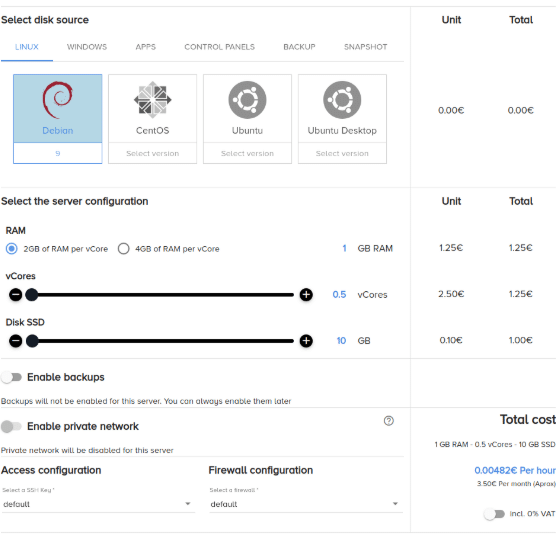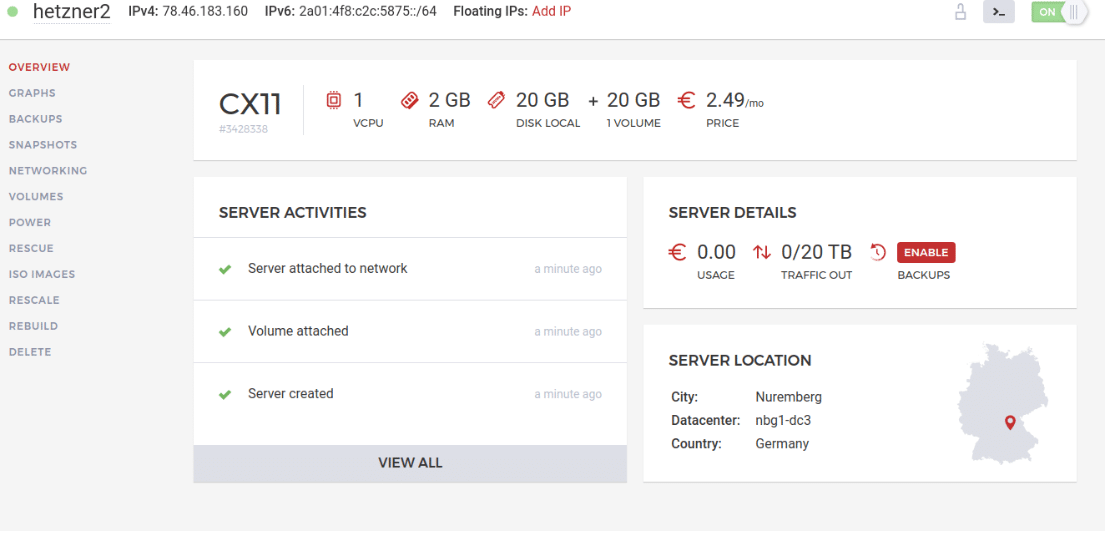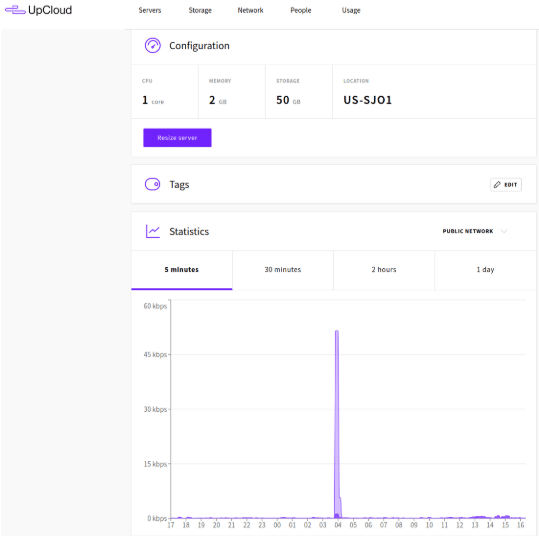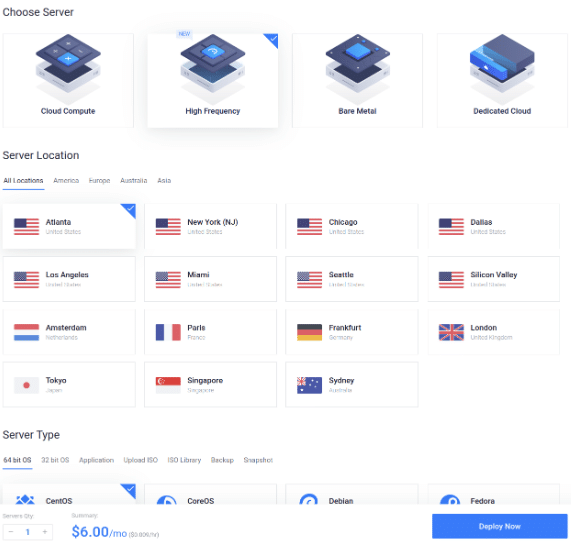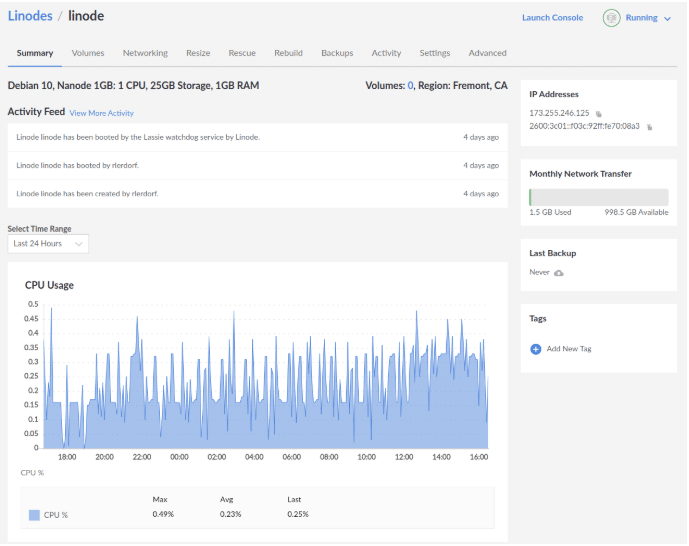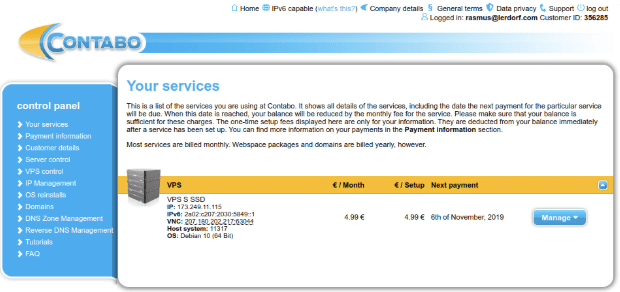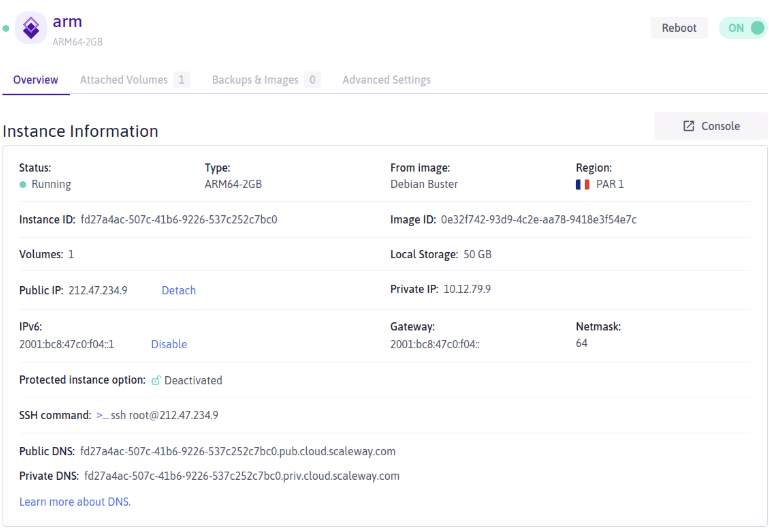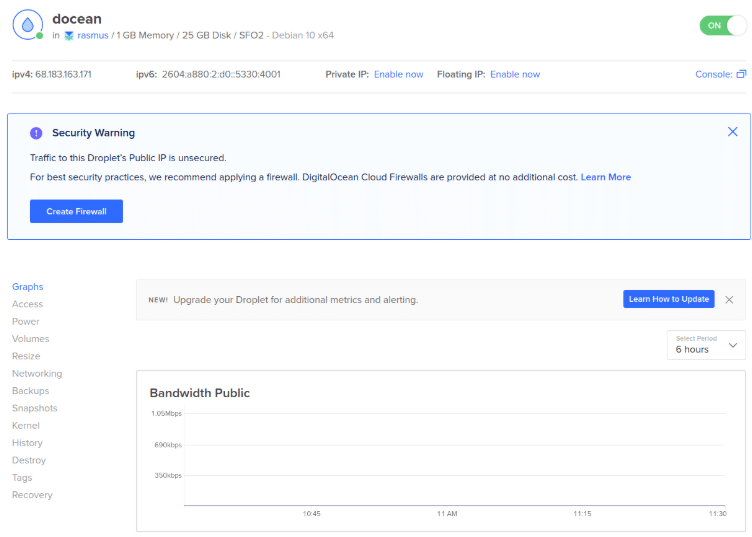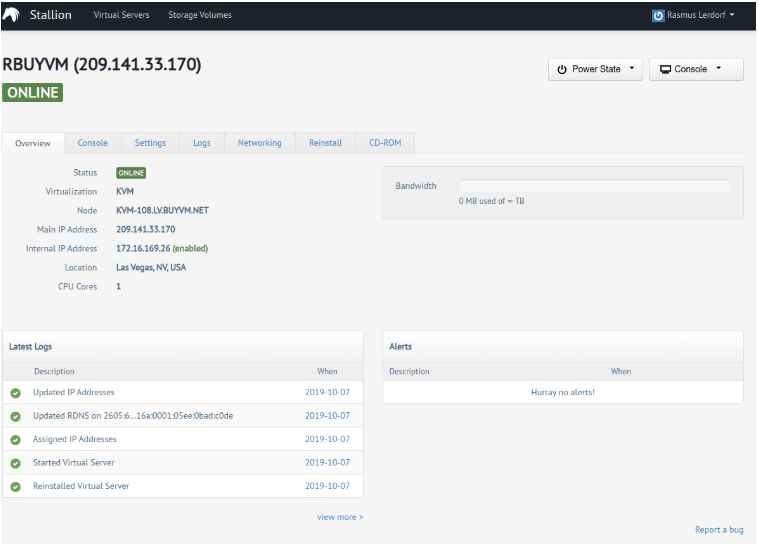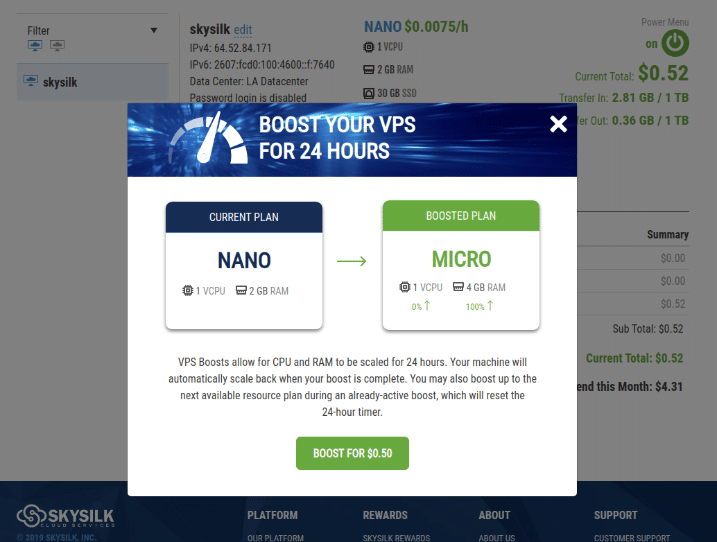Finding a Fast, Reliable and Low-End (cheap) VPS Server is one of the most crucial Decisions for most admins.
There are many providers that offer low-end and low-cost VPS solutions and we’ve compiled a list of many of the top virtualized server providers, along with some statistics we’ve found through our own testing and from around the web1!
VPS Providers Ranked by Disk, Network, CPU & Ease-of-Use
| Providers (1-10) |
Disk Speed (1-10) |
Network Speed (1-10) |
CPU (1-10) |
Ease of Use & Sign-up (1-10) |
Overall (1-10) |
|---|---|---|---|---|---|
| Kamatera | 9.5 | 4 | 3 | 4 | 5.5 |
| A2 hosting | 6.5 | 9.3 | 6.5 | 1.5 | 3.5 |
| Hostwinds | 5 | 9.3 | 3 | 7 | 3.5 |
| 1&1 ionos | 6.5 | 5.5 | 6.5 | 4 | 5.5 |
| Clouding.io | 5 | 5.5 | 6.5 | 7 | 5.5 |
| Hetzner | 8.9 | 9.3 | 3 | 9.5 | 9.5 |
| Upcloud | 6.5 | 5.5 | 9.3 | 9.5 | 9.5 |
| vpsdime | 8.9 | 9.3 | 9.3 | 1.5 | 3.5 |
| Lunanode | 8.9 | 5.5 | 9.3 | 7 | 9.5 |
| Vultr | 6.5 | 5.5 | 6.5 | 7 | 5.5 |
| Linode | 9.5 | 9.3 | 3 | 7 | 5.5 |
| OVH | 6.5 | 4 | 6.5 | 1.5 | 3.5 |
| RamNode | 6.5 | 5.5 | 3 | 7 | 5.5 |
| Contabo | 6.5 | 5.5 | 9.3 | 1.5 | 3.5 |
| Scaleway | 6.5 | 9.3 | 9.3 | 7 | 9.5 |
| DigitalOcean | 6.5 | 9.7 | 3 | 9.5 | 9.5 |
| BuyVM | 6.5 | 9.3 | 9.3 | 1.5 | 5.5 |
| Amazon Lightsail | 4 | 3 | 9.3 | 4 | 3.5 |
| Microsoft Azure | 3 | 9.3 | 6.5 | 1.5 | 3.5 |
| Skysilk | 5 | 4 | 9.3 | 7 | 3.5 |
| VPSServer | 8.9 | 5.5 | 9.3 | 7 | 5.5 |
| 81VPS | 5 | 5.5 | 1 | 1.5 | 3.5 |
So after getting an overview of the overall performance ranking for the VPS solutions above, let’s start digging into the details for each one. We have tested each of them and gathered as well as compiled every data that we know would be valuable for you. Let’s get started with the very first VPS on top of the list.
1. Kamatera
For only $9 a month, Kamatera offers a reliable VPS service that has an option for a PHP service. A dedicated CPU thread is also available with storage of 20GB SSD and 1GB of RAM.
Now that’s something that’s really nice to have with a guaranteed performance that’s meant to really serve its purpose.
Kamatera comes with PHP 7.3 along with nginx-1.14 that is preconfigured for PGP-FPM ad the system is based on Ubuntu 18.04-LTS.
Spinning up servers in Hong Kong, London, Amsterdam, Frankfurt, Santa Clara, Texas, Toronto, New York, and 5 other cities in Israel is also possible and for this test, I used the server in Santa Clara.
Pros
- Great performance for PHP 7.3 default configuration while Opcache is enabled and mysqlnd plus some common extensions compiled.
- Good out-of-the-box performance for nginx/php-fpm. Dropping a PHP app into its /var/www/html section and it’s going to work fine.
- Offers a 30-day trial for a single server which is really nice as it allows you to test the software before committing to pay for a subscription.
Cons
- Uploading a public key to your profile is not possible so a password-root-login is required during the initial setup.
- It is already 2020 but Kamatera still doesn’t support IPv6. We just think that it’s just fitting for any service to have IPv6 support along with the usual IPv4.
- The PHP setup may have MariaDB/MySQL support but you’ll need to install a DB server of your own which can be used locally. There is a service that’s specific to MySQL so two servers can be run allowing separation between DB and your web but at such a price point, it is reasonable to believe that there are not many people who will try that.
- These days, Composer is a need for any PHP setup but for Kamatera, it wasn’t.
- Setup for nginx needed some tuning for instances like php-fpm for unix-domain, tune proxy buffers, and enable sendfile.
PHP Notes
Since Kamatera is a nginx/php-fpm service, here some notes for nginx/php-fpm:
- Before going live, remember to turn off display_errors which is found in /etc/php/7.3/fpm/php.ini
- If it is going to be a PHP server that’s going to be a dedicated one, it would be good to consider the following tweaks:
- Enable sendfile in nginx if static files are not going to use cdn.
- Tweak opcache.memory_consumption from 128 to 512 but be sure to leave room for DB. If the app is demands heavy DB, lowering or getting a bigger VPS would work
- The opcache.interned_strings_buffer needs tweaking from 8 to 64
- Switching nginx to server unix:/run/php/php7.3-fpm.sock; and the php-fpm to listen = /run/php/php7.3-fpm.sock would work.
Specifications
*Quick Note: As of 05/05/2020, Kamatera has emailed us and told us they’ll be using Intel Platinum 8270 from here on out on all VPS Servers, so please note you may have increased Performance than what was tested below from the study we referenced!
Performance
I have also using the non-dedicated CPU thread service which was priced at $4/month and just like the previous test I did, I also tried spinning it to the Santa Clara server then chose the regular VPS option. I was actually surprised to see that it was quicker than the previous service that I tested in terms of spinning. It only took 3 minutes compared to the 13 minutes that I got with my previous test. This was probably due to the fact that the components installed were a lot less. I just found it a bit disappointing not to find the Debian 10 option on it.
It’s been out for quite a long time now so I was expecting to see it during my test but it wasn’t an option yet. In terms of performance, the $4/month service that didn’t have a dedicated CPU performed just about the same as the more expensive $9/month VPS. But the $5 difference is there as an assurance that the level of performance of the more expensive option will always be there. With the cheaper option, all you can do is to wish that a noisy neighbor would not suddenly show up.
Specifications
Performance
Conclusion
Kamatera has some features that I really like. Signing up for the free trial was very smooth and after doing so, trying the different configurations also went well without the annoying hassle of asking for billing and payment methods. The performance was decent all in all. If you ask me what I wish Kamatera would have then it would be IPv6, Debian 10, and Initial public key server auth.
2. A2 Hosting
This VPS provider offers a single-core version at $5/month with 20GB SSD storage and 512MB of RAM. If you choose the $10 version, you will be getting 1GB of RAM and an extra 10GB of SSD storage. That’s something that really sounds promising at first glance but some are not impressed by the fact that there are only limited locations including Singapore, Michigan, Amsterdam, and Arizona. Again for this VPS, there is no Debian 10 that’s in place and I personally didn’t like the bunch of upsell options during the sign-up process. But the good thing is that those offers were not installed/added to the installation by default. The “Complete Order” page has also left a negative impression on me but thankfully, an email was sent to me confirming that my order went through
Pros
- Network and CPU performance are generally good
- Serial console for HTML5 is pretty nice (just needed time to figure out how to SSH in)
Cons
- Public Key initial access is not available
- There is no Debian 10 and IPv6
- The sshd configuration only listens on port 7822 so I had to go to look for the sshd config
- You will usually be stuck at sharing an ancient kernel along with other virts within the box because of the OpenVZ virt.
- Disk IO performance is not that great.
Specifications
Performance
Conclusion
I am not that impressed with OpenVZ VPS. Though the performance tends to be quite good, it will only be a good value for money if your provider does not oversell the host itself. Isolation isn’t one of its strengths and it’s a risk one would take especially if there are noisy neighbors out there that tend to degrade its overall performance. During my test, OpenVZ VPS performed well and if it continues to perform at that level then I would say that it’s going to a good bang for your buck service.
3. Hostwinds
For only $4.49/month, you will get 1GB of RAM and 30GB of SSD storage from this Hostwinds. And if that’s something that wouldn’t suffice your needs then you can opt for the higher plan which offers 2GB of RAM and 50GB of SSD storage for only $8.99. They have locations in Amsterdam, Dallas, and Seattle which is a good set to start with. For the test, I subscribed to the recurring $4.49 plan and chose Seattle for the location.
First of all, the signup process is transparent and simple and I really love it when a provider offers IPv6/64 subnet which I can play with. For Hostwinds, it didn’t have an option for setting rDNS for arbitrary addresses within the subnet so I always needed to hit the “Add IPv6 Address” button so I can get to the 2607:5501:3000:43f:1:5ee:bad:c0de. However, adding the code manually to the VM actually worked fine and the only negative thing about it is that you won’t get any reverse DNS for it.
A “Firewall Profile” is also available but I wasn’t able to figure out how creating a new profile is done and it only had one that allowed all traffic by default.
Pros
- Configuration options are available to be seen right before you pay
- IPv6 /64 Subnet is available
- The network IO is fast
- I was able to SSH right in with the public key that was installed and added to my profile
Cons
- Booting the server initially had problems so I had to go into VNC console then do the Ctrl-Alt-Del method
- There is no Debian 10
- I may have gotten unlucky but the disk was really slow in writing
- A key which I didn’t recognize was found in ~root/authorized_keys
Specifications
Performance
Conclusion
Hostwinds has some of the things that I am looking for but my test wasn’t a good experience overall because of the slow disk writes that I experience. I even tried testing it after a couple of days and re-ran the large-file only to find out that it was still slow just like the first test I performed.
4. 1&1 IONOS
At $2/month, you’re going to get 512MB of RAM and 10GB of SSD storage space and that’s for the single-core of course. The available locations include Spain, UK, Germany, and Kansas in the United States. There is also an option for 2 vCores that offers 2GB of RAM and 80GB of SSD storage which is priced at $10/month. Now that’s already a good deal but I decided to try the lower-priced one.
Pros
- Affordable plan starting at only $2/month
- The signup process is smooth and quick
Cons
- Initial Auth has no public key
- Debian 10 is not available
- A bit annoying signup that is contract-based and their billing system makes it hard to try different service subscriptions that are available
- There is no IPv6 but I have a feeling that they’re going to support it for the larger instances
Specifications
Performance
Conclusion
This VPS offers a lot of features for a very affordable price of only $2/month. On top of that, it’s supposed to offer unlimited bandwidth which is a great value for money.
5. Clouding.io
Price starts at €3/month with 0.5 vCores, 1GB of RAM space, and 5GB of SSD storage space. If you want to add more storage space then it’s going to cost €0.50 for every 5GB. I wondered why there was no option at all to choose where to host it but testing the IP has revealed that the host used is in Barcelona which is why I believe that it is the only available data center. Signing up was easy and just like the others, it didn’t allow me to upload and use my own public key an instead, they created one which I can use. I was then given the freedom to create additional ones that I was allowed to download. I immediately was able to make it up and running by just ssh -i ~/.ssh/clouding.pem root@<ip>.
One thing that I found really interesting is that only the folks in their marketing department cared to get in touch with me when I was writing this guide. I think being a small provider really helps in this aspect.
Pros
- There’s a public key upon the first login
- A free trial is offered and the signup process is easy
- Compile test and PHP showed really great performance
- Good UI for easy customization and the firewall default setup is really nice
Cons
- Debian 10 and IPv6 are both not available in this VPS
- The only data center that they have is located in Barcelona
- Dist read times were somewhat slow
- I did not found a tweak that would help in configuring reverse DNS
Specifications
Performance
I tried using a second server setup because of the fact that they really cared to contact me and this time, I opted for the €9/month that offers 4GB of RAM 15GB of SSD Storage along with 1 core. Instead of going Debian, I tried “LEMP” so I would see what the setup of their PHP actually looked like.
The results revealed that they were actually using Ubuntu nginx 1.14.0 with setup for PHP 7.2.19. For example, using 4GB of RAM in this setup which is meant for a dedicated web server would require editing /etc/php/7.2/fpm/php.ini and setting things as follows:
[opcache]
opcache.enable=1
opcache.memory_consumption=1024
opcache.interned_strings_buffer=256
opcache.max_accelerated_files=100000
opcache.validate_timestamps=1
opcache.revalidate_freq=5
opcache.save_comments=1
opcache.use_cwd=1
opcache.enable_file_override=0
opcache.enable_cli=0
opcache.max_wasted_percentage=10
opcache.interned_strings_buffer=256
opcache.fast_shutdown=1
opcache.huge_code_pages=0
opcache.optimization_level=-1
opcache.log_verbosity_level=2
You’ll then need to restart the PHP-FPM using the systemctl restart php7.2-fpm command. If you’ve got lots of PHP code, be sure to keep <?php phpinfo();?> in check and spot for any restarts. OOM restarts are crucial and you should always check the counter in the Opcache section within phpinfo (). If you see that it is happening more than a single instance every two days especially when you’re pushing new codes then be sure to increase the memory that is allocated for Opcache.
The setup I used actually had fastcgi_pass unix:/run/php/php7.2-fpm.sock; for nginx and it continually talks to PHP on the domain socket for unix. The setup performed great and generally, the defaults for the nginx setup was good.
Specifications
Performance
Conclusion
I experience slow network speeds on my test in California may be because the server I was using is hosted in Barcelona. The disk reads were also below average but the overall experience that I had was generally pleasant. The compile-time for PHP was near the top of the list which is a good thing as it indicates a solid VPS performance.
6. Hetzner
Hetzner has been in the business for quite a long time and they have locations in Nuremberg, Falkenstein in Germany and as well as in Helskinki. Price starts at €2.49/month which already gives 1 vCPU along with 20GB of SSD storage and 2GB of RAM space. If you want more space then you can opt for the €4.90 plan which offers 2 vCPU with 40GB SSD storage and 4GB of RAM. Now that’s a decent powerhouse for a service that costs a little bit above $5 per month. I love the provisioning process of this VPS and it allows you to control almost everything. Yes! you can even choose between XFS or ext4 file systems.
Pros
- Debian 10 is available
- Initial login allows a public key with your own uploaded one
- Reverse DNS and IPv6 that comes with /64 subnet
- Allows private network backchannel
- Any VPS can be assigned with floating IPs
- Allows choosing between XFS and ext4 file systems where some workloads are well suited to the former
- A nice option for creating, attaching, detaching, or re-attaching with an additional choice for growing storage volumes
Cons
- This VPS only has European data centers
Specifications
Performance
I also tried the 2 vCPU, 4GB RAM, 40GB SSD Storage configuration and here are my observations:
Specifications
Performance
Conclusion
I personally think that Hetzner is a really nice and fully-polished VPS. Every new server that I try simply spins in almost an instant. It’s also compatible with the latest versions of operating systems and offers different configuration options. The IPv6 /64 subnet feature along with the reverse DNS option were both great tools that I did not expect at this price but they’re there! If you have a place that you want to host in Europe then Hetzner is going to be a perfect choice!
7. Upcloud
Upcloud is one of my favorites because they’ve got a referral program that offers great deals to those who would be willing to promote the service. I personally got a lot of credits from them which I am now using to host some small projects. They offer a $25 credit when you signup to the service using a referral link.
In terms of the price, Upcloud costs only $5/month and it already has 1 core along with 1GB of RAM and 25GB of SSD storage. If you want to enjoy more space, their $10 plan is going to be perfect which doubles both the RAM and SSD storage space. They have locations in San Jose, Chicago, Frankfurt, Helsinki, London, Amsterdam, and Singapore which is a good plus. There are also a lot of options for configuration which include the network adapter type (RealTek RTL8139, VirtIO, or Intel E1000 emulation) and there is also an option for choosing between Cirrus Logic or VGA standard display adapter. If you’re doing the hosting on Windows then the display adapter will bring a difference since they support all of them. For Linux hosting, these options would have little to no impact at all.
Pros
- Supports Debian 10
- Initial login using public key using your own uploaded key
- Supports IPv6
- Firewall setup is easy to use
- Customizable templates, images, and even startup scripts
- CPU speed is really impressive for its price
Cons
- There is no IPv6/64 subnet and they only accommodate request for 5 IPv6 addresses
- Average performance for both network and Disk IO
Specifications
Performance
Conclusion
The PHP compile time was pretty impressive which clocked under 3 minutes. Now that’s an awesome thing for a $5 VPS. I also love its provisioning process and now that they’ve got a location in San Jose, I was getting 10ms pings from the comfort of my connection at home.
8. vpsdime
They’ve got locations that offer some really impressive connection speeds. UK offers 1Gbps, Dallas 10Gbps, Los Angeles 1Gbps, and Seatle 10Gbps. The map that they have also shown that they have locations in Amsterdam and New Jersey but both of which I didn’t see in the options when I subscribed for the $7/month plan. It offers 4 vCPUs, 6GB of RAM, and 30GB of SSD storage which is something that really brings value to your buck! But there’s a catch though which I will reveal below. Yes! They have this in their signup process:
Anything related to ZenCash, Digital currency mining, Mass mailing, Torrents, TOR, Mining, IRC, Teamspeak, Starbound, Runescape, Minecraft, and Multics are NOT ALLOWED. Please read our TOS before ordering.
The signup process was a little bit confusing and there was no chance of getting to configure anything in it.
They also happened to be the first provider who emailed me in cleartext both the management console and root passwords. My instant cancellation was a bit harsh and it turned out the next providers which I tried after them also did the same. It is understandable from the customer support’s point of view since explaining SSH keys is quite hard. It really is a lot easier to just give out the password but I still wanted the public key option though most providers would prefer using passwords.
Pros
- Supports Debian 10
- Performance is amazing considering its cheap price but beware of less resource isolation due to Open VZ and as well as load limits
Cons
- There is no public key during the initial login
- Load limits and OpenVZ
- Does not support IPv6
- Not so clear signup process
- The Management User Interface doesn’t look that great
- The VPS root password was emailed to me along with my vpsdime.com password
Specifications
Performance
Conclusion
The advantage of vpsdime is that it is an OpenVZ VPS but I personally think that the UI is a bit crappy. Password management is a bit terrible and there’s also the load limits that are harsh to deal with. They’re alble to provide a good performance though and that is according to what they say in the note below:
Users are REQUIRED to control their 15-min system load to remain below 2.0 at all times.
Failing to do this can result in your VPS being suspended which makes me think that this isn’t actually a VPS but more of a shared hosting that is more prone to having noisy neighbors that may affect your overall experience. However, they have a more traditional VPS service which they call “Premium VPS” but it’s an expensive one that costs $20/month and has 1 vCPU, 4GB of RAM, and 60GB of SSD storage space. It doesn’t have load limits too which is a very welcome feature.
9. Lunanode
At only $3.50 a month which already offers 1vCPU, 1GB of RAM, and 15GB of SSD storage space, Lunanode is definitely one of the cheapest that you can find in the market. If you’re needing more then there’s the $7/month plan which offers either 2GB of RAM or 2 vCPUs both having 20GB of SSD storage. The signup process is a very nice experience and the place where your SSH key should be entered is obvious which is a good sign for me. Available locations include Montreal and Roubaix in France and Toronto. In my testing, I chose the $7/month plan and opted for the one with 2 vCPU then set the location in Toronto.
Pros
- IPv6 support is available
- Offers free trial credit of $20
- Public key initial login is available if you don’t do ISO install to get Debian 10
Cons
- Template for Debian 10 is not available but there was an ISO option for it which took longer to get up and running since I had to manually install through VNC window
- It was not that obvious that I needed to click the “Keypair” button just to get it activated because it was a blue button that looks it’s already been clicked.
Specifications
Performance
I have also tested the cheaper $3.50/month version but used Debian 9 with it so I wouldn’t need to go through installing the ISO manually and interestingly, it required me to login using debian@ instead of root@ then you will be allowed to “sudo bash” from that instance.
Specifications
Performance
Conclusion
I have learned to love Lunanode though I had confusion in its networking aspect but I found out that it was due to a mistake on my part. Removing the default security group which is in the management User Interface then you will fail to get anywhere with it. If you’re looking for a Non-US location that is also a North-American one then this one is going to be a great choice. The performance of the 2vCPU $7/month plan was great and you can also get a $20 credit if you signup using a referral link.
10. Vultr
There are three available pricing plans for Vultr which includes the $2.50, $3.50, and the $5 plans that increase in bandwidth, storage and RAM as you go higher. Their basic $2.50 plan is IPv6 only and it is useful for those cases when you don’t need IPv4. I tried that one of course and it offers 1vCPU, 512MB of RAM and 10 GB of SSD storage space. They have lots of locations around the world and for my test, I used Atlanta using the $2.50 IPv6 only plan which was only available there and in the New Jersey location.
Pros
- Supports Debian 10
- Allows Initial Login using Public Key
- IPv6 /64 support
- Low price VPS starting at only $2.50/month
Cons
- Bandwidth limit is very low for the cheaper plans but the $5 option offers 1TB
Specifications
Performance
Conclusion
During my test, compiling PHP was not allowed unless I added a 1GB swap file which I did using the script below:
dd if=/dev/zero of=/swap.img bs=1M count=1024
mkswap /swap.img
chmod 0600 /swap.img
swapon /swap.img
Doing that has resulted in a really good performance with only 3 minutes to compile and it even went directly into swapping within that time frame. The $2.50 plan was a sold server even with its tiny size. However, if you need a server that has 18446744073709551616 of possible IP addresses or something that you can simply make IP address like 2001:19f0:5401:2117:1:5ee:bad:c0de then you will need to rdns it into the management UI as shown below:
$ host 2001:19f0:5401:2117:1:5ee:bad:c0de
e.d.0.c.d.a.b.0.e.e.5.0.1.0.0.0.7.1.1.2.1.0.4.5.0.f.9.1.1.0.0.2.ip6.arpa domain name pointer iseebadcode.lerdorf.com.
At $3/month, you will already be allowed to have an IPv4 address but their $5 deals is better which already includes IPv4 in it. The service of Vultr is a solid one overall because they make sure that they get everything right.
11. Linode
This VPS offers plenty of locations around the world and they have what is called a “Nanode” that’s priced at only $5/month and already has 1vCPU, 1GB of RAM, and 25GB of SSD storage. In my test, I chose this plan and picked the Fremont location.
Positives
- Supports Debian 10 and has IPv6
- It allowed me to use my own key in the public key initial login
- Their Provisioning process is great
Cons
- Adding IPv6 network requires contacting support. It would have been nice if this can be done through the Web UI
- There is no cloud firewall feature
Specifications
Performance
Conclusion
The network performance is very nice if you are also in Fremont. The new and improved web UI is definitely better than the old one. I found the performance of Nanode to be very excellent.
12. OVH
The $3.35 plan already offers 1vCPU that has 2GB of RAM and 20GB of SSD storage space. They also claim to have data centers in a lot of different locations worldwide but during my test, I was only able to choose Beauharnois Canada. My experience in placing an order was also terrible. You will need to select your VPS then provide your billing info then you’ll get a message that says:
"Within a maximum of 24 hours, you will receive an email confirming that your VPS has been delivered, along with your bill."
Other providers would simply spin up within minutes right after that process but for OVH, I ended up getting an email 15 minutes later and it was on a Sunday evening.
Pros
- Supports Debian 10 with IPv6
- Offers unlimited bandwidth at 100mbps
- An awesome feature of setting the VM to terminate on a set expiry date so you can avoid getting billed out of auto-continue plans
Cons
- There’s a confusing difference between the management consoles in ca.ovh.com and us.ovhcloud.com. They have different logins and I had a hard time figuring out which one is for which account.
- They emailed me the root password even when SSH keys are not really to hard to manage
- I ended up wasting time figuring out how to delete a particular instance
- The VM didn’t come configured with the provided IPv6 but it worked well after I tried to manually add it to the file at /etc/network/interfaces.d/50-cloud-init.cfg file.
Specification
Performance
Conclusion
The network performance and disk writes were quite poor. The root password that they emailed just added to my negative experience. The provisioning experience was also poor considering that I am an OVH US customer and I’m in one of their bare metal dedicated servers. I was able to get it a great price when they gave me an introductory offer after they opened a data center on the west coast. But the provisioning and management interface were only as bad as the previous once but once you are set up and the VPS is already running, you won’t be able to notice this.
I was surprised to find that the IPv6 which was assigned to me actually had the reverse DNS of someone else. That isn’t uncommon though if we’re going to talk about IPv4 but the range of IP addresses for IPv6 is so wide that it made me wonder why is that even possible. It was also weird to still need a number keypad just for entering numbers in the console window. I tried entering 123 and the console had no way of figuring out whether the numbers were entered using the number keypad or not.
13. RamNode
You will get 1vCPU, 512MB RAM, and 10GB of SSD storage space for only $3/month but I chose the higher plan which is at $5/month and I set it to the LA data center. They’ve also got data centers in the Netherlands, NYC, Seattle, and Atlanta.
Pros
- Supports Debian 10
- Has IPv6 support
- Allows Public Key initial login using your own key
Cons
- I found the management UI to be a little bit sparse and it lacks cloud firewall and other sorts of whistles and bells for warning
- There’s something that says “Security Groups” but I had a hard time figuring out how I can add the rules that I want to it
Specifications
Performance
Conclusion
For a VPS that is 2-core, I wanted to have a faster PHP compile time but it was slow along with poor disk writes. But overall for the price of only $5, this wasy already a good VPS and everything worked almost right out of the box.
14. Contabo
Price starts at €4.99/month and you’ll be getting 4vCPU, 8GB of RAM, and 200GB of SSD storage space. Now that’s plenty of space for you to use and if you think that isn’t enough yet then you can get the €8.99/month plan which offers 6 cores, 16GB of RAM and 400GB of SSD storage space. They also offer setups that are “SSD-boosted” also known as HDD VPS in case you really need a lot of storage. So what really is the big catch?
I have been a fan of Contabo ever since and I’m not really surprised of what the offering sounds like but they’re one of the best in terms of storage space. I have tested the €4.99/month option with Debian 10 and it says it’s using a switch port that is capable of 200 Mbit/second. That is enough for me to suspect that it’s going to reflect in the bandwidth. The higher-priced plan (€8.99/month) on the other hand is using a switch port that is capable of 400 Mbit/second.
- Supports Debian 10 and rDNS as well as /64 though you’ll need to run enable_ipv6 and reboot in order to have it activated.
$ ping 2a02:c207:2030:5849:1:5ee:dead:c0de
PING 2a02:c207:2030:5849:1:5ee:dead:c0de(2a02:c207:2030:5849:1:5ee:dead:c0de) 56 data bytes
64 bytes from 2a02:c207:2030:5849:1:5ee:dead:c0de: icmp_seq=1 ttl=56 time=167 ms
64 bytes from 2a02:c207:2030:5849:1:5ee:dead:c0de: icmp_seq=2 ttl=56 time=163 ms
64 bytes from 2a02:c207:2030:5849:1:5ee:dead:c0de: icmp_seq=3 ttl=56 time=162 ms
64 bytes from 2a02:c207:2030:5849:1:5ee:dead:c0de: icmp_seq=4 ttl=56 time=162 ms
64 bytes from 2a02:c207:2030:5849:1:5ee:dead:c0de: icmp_seq=5 ttl=56 time=161 ms
$ host 2a02:c207:2030:5849:1:5ee:dead:c0de
e.d.0.c.d.a.e.d.e.e.5.0.1.0.0.0.9.4.8.5.0.3.0.2.7.0.2.c.2.0.a.2.ip6.arpa domain name pointer iseedeadcode.lerdorf.com.
- Offers unlimited bandwidth at 200 Mbps bandwidth
Cons
- There’s a setup fee if you don’t choose their 12-month contract
- It took around 34 minutes for the provisioning
- There’s not much in terms of available locations. They only have Nuremberg and they say they also have one in Munich but it wasn’t available as one of the options
- They emailed me a cleartext password for VPS root
- They also emailed a cleartext password of the VNC root
- Emailed even the contabo.com account password in cleartext
Specifications
Performance
Conclusion
Contabo’s performance for this price point is simply hard to beat along with the 200GB storage that they offer for their basic plan. I just noticed that the disk writes were a bit slow but the reads didn’t give me any problem because it was fast. There’s also a little bit limited bandwidth with the 200 Mbit switch port if you choose the smaller plan.
However, this can easily be solved by the higher plan which is priced at €8.99. I don’t like the passwords that have been emailed to me though. I know that it’s a lot easier to do that but it also wouldn’t take that much effort on their part if they used a more advanced way where people who have knowledge on what they’re doing can simply add their public keys.
15. Scaleway
With locations in Amsterdam and Paris and a starting price of only €2.99/month which offers 2vCPU along with 2GB of RAM and 20GB of NVMe storage, Scaleway is quite a decent VPS for those who are looking for a cheap service that works well. They also offer cheap ARM instances and for the same price of €2.99/month, you can get 2GB of RAM and 50GB SSD storage along with a 4 core ARM instance. There’s also the 4GB/6 core instance at €5.99 if the cheap one doesn’t suffice your needs. I tried to ARM instance in my test and picked the €2.99 plan in the Paris data center.
Pros
- Supports IPv6 with /64
- Supports Debian 10
- Offers plans for ARM instances
- Network is unlimited and fast
- The admin console has a Firewall
- Allowed me to login with my own public key on initial login
Cons
- I may have just missed but I really couldn’t find the rDNS from the management user interface
Specifications
Performance
Conclusion
Performance statistics are not as comparable with the other ones because it’s an ARM VPS but it offers a generous amount of storage with decent disk reads, unlimited bandwidth, and 4 cores. It should already work well if you’re looking to set up a small web server that is capable of handling multiple numbers of concurrent requests. But each one of these requests must not be too intensive to the CPU. In terms of provisioning, Scaleway also does everything right. So I personally think that their non-ARM options would also perform great.
16. Digital Ocean
Digital Ocean is a popular VPS and I was even thinking not to include it in this list anymore but just to give you an idea how their $5/month compares with the others, I did test it. For this price, you will already get 1 shared vCPU, 1GB of RAM and 25GB of SSD storage. I picked the San Francisco location but they also have Amsterdam, Banglore, Frankfurt, London, NY, Singapore, and Toronto servers.
Pros
- Allowed me to use my own key on initial public key login
- Supports Debian 10
- Supports IPv6
- Provisioning experience is great
- The admin console has its own firewall
- The management UI really works well
- They have tutorials and documentation on how to do every sort of things that you want to perform with your droplet
- They’ve got mirrors for Linux distro making the install process pretty quick
Cons
- You will only get /124 subnet for IPv6 or 16 IPs. It will surely make you wonder how they even do that
Specifications
Performance
Conclusion
Digital Ocean has been delivering a solid performance over the years. While it is not the cheapest and the fastest out there, it’s one of the VPS services out there that simply works. Their management user interface is also great but it is a bit annoying that they’ve only got a non-standard /128 subnet for IPv6. It means that they own the whole block of 2604:a880:: so they are able to accommodate 4,294,967,296 /64 subnets in it. So that means that it would still take more than half of the world’s population to use Digital Ocean and use IPv6 before that number runs out. I find it a bit nit-picky though and I use it most of the time for my services that run php.net so I simply nit-pick on the IPv6 setup that they have. There simply is nothing else to criticize about this VPS and you will even get a $50 credit if you use a referral link.
17. BuyVM
You can choose among different options of OpenVZ and KVM that under $10 with this VPS. This is what they can say about their service:
"BuyVM has developed multiple in-house solutions to mitigate "noisy neighbor" issues.
That’s something that sparked my interest and I’d like to know what exactly it is that they have done. They are called “KVM Slice Servers” and they are available starting at $2, $3.50, and $7 all belonging to the sub-$10 price range. These plans offer 1 vCPU with 512Mb/1GB/2GB of RAM along with 10GB/20GB/40GB of SSD storage respectively. I picked the middle plan ($3.50/month) because the basic one doesn’t have enough RAM to accommodate the type of testing and use that I was planning to perform. They’ve got locations in Las Vegas, Luxembourg, and NY. For the test, I picked the Las Vegas Location.
Pros
- Fast network and unlimited bandwidth
- Supports Debian 10
- Supports /64 subnet IPv6 with reverse DNS but these are not enabled by default
Cons
- Does not support public key on initial login
- They ended up sending me in plaintext the password for the management UI
- They’ve got the habit of asking for a hostname and it needs to be unique across all the other customers
- The server did not boot right away and a “No bootable device” error appeared on my screen
- As I made it through that problem, another one got to the surface. The Debian 10 that was installed on it was old. I spent even more time upgrading it
Specifications
Performance
Conclusion
Its VM did not boot initially so I tried going through the management console in order to request for it to be reinstalled then it booted after that. The management UI which they call Stallion was okay and the overall performance was close to the top. It seems like it’s made using PHP and I was interested in its CPU model which includes AMD, Intel, and Qemu. It is possible to toggle between APIC, APCI, and PAE then you can pick your hard disk driver and network. If you are using Windows in your VM then this one will really work great.
The part that involves the IPV6 has given me the impression that it’s able to be turned on in the VM but unfortunately, it did not work for me so I ended up doing it the manual way. I think it will work on other operating systems and all you need to do is modify the /etc/network/interfaces and add the following:
iface eth0 inet6 static
address 2605:6400:0020:016a:1:5ee:bad:c0de
gateway 2605:6400:0020::1
It also supports /64 subnet and has rDNS so you’ll see “iseebadcode” at the back. In terms of rDNS, the old owner’s rDNS was actually left in the IPv4 when I checked it. And despite of those bad impressions that I had at first, the VM turned out to be a solid one.
18. Amazon Lightsail
The AWS User Interface is a bit hard to navigate but once you get used to it especially the Lightsail section, everything becomes a breeze. You are allowed to upload your public key and choose your OS and the plan that you want. Their basic $3.50 plan is given a month free so I went for that one in my test. It gave me 1 vCPU, 20GB of SSD storage and 512MB of RAM space. If you get the higher-priced plans, their $5/month subscription offers 1GB of RAM with 40GB of SSD storage and this is what you need to get if you want to use Amazon Lightsail.
Pros
- Allowed me to use my own key on initial public key login
Cons
- Does not support Debian 10 and it took time for me to upgrade to the latest version which is 9.5
- Does not support IPv6
Specifications
Performance
Conclusion
This VPS lacks IPv6 and does not support Debian 10 and these are points which are a big turn off for me. It got a relatively poor Disk IO performance and I noticed that the network in Europe and Montreal was faster compared to that in California. However, both of them were much slower compared to the other service providers that I tested in this guide. Maybe they tried to throttle down both the network and disk IO on the free version. My test revealed that this VPS isn’t a serious competitor in the market.
19. Azure
I got lost and felt frustrated in the management UI in the last time I used Azure. It took me plenty of clicks just to find the VM options which actually contained at least 221 entries in it. But I found that it’s a lot easier to sort in terms of the monthly cost. They only got 2 available options that are below $10, the B1ls and the B1s which costs $3.87 and $7.74 having 512MB and 1GB of RAM respectively. I picked the higher-priced one and chose the US-West-2 region as the server location.
Pros
- Supports Debian 10
- There’s a free trial available that is worth $200
- I was allowed to use my own key on public key initial login and used it to my own account
Cons
- It took some time for me just clicking in order to get to the instance where I can start provisioning the VM
Specifications
Performance
Conclusion
The Disk IO was a bit slower to me compared to that of Amazon Lightsail’s but network performance and CPU were good enough. Another good thing that I saw is that it allowed me to log in to my own account using my own initial key. However, looking into the price, I would say that there are better services out there that offer a better price.
20. Skysilk
The signup process was smooth and I personally love the feature that allowed passwords to be turned off even before VPS was created. The process of adding an SSH key was also very important to me. The available locations include NY and Los Angeles. The latter had more bandwidth and it was closer to my location during my test so I picked it along with the $5/month VPS that offers 1 vCPU, 2GB of RAM, and 30GB of SSD storage space.
Pros
- Allowed me to do public key initial login using my own key and there was an option to disable passwords
- Supports IPv6 and reverse DNS
- There was a “Boost” mode that offered a way to boost the VPS for another 24 hours at the price of only 50 cents. It actually meant that my RAM was going to be doubled from 2GB to 4GB
Cons
- There is no Debian 10 support
- Resource isolation is not that good because it uses LXC which is very much like OpenVZ which are both not hardware virtualization
- They don’t expressly say that you can actually get 16 IPv6 IPs and they’ve only got IPv6 /124 support
- The UI for rDNS only allows setting a reverse DNS for 1 IPv6 IP address. I think they did it purposefully not to allow users to add IPs manually
Specifications
Performance
Conclusion
I personally prefer using hardware virtualization even when others believe that resource isolation is better. However, this one performed well as an LXC implementation with set up for the public key and having passwords disabled. I also like that it was able to PHP compile in under 3 minutes and that it has IPv6 with /124 subnet that gives 16 IPs in total. It isn’t a bad choice for a VPS but that is if you’re okay with resource isolation rather than hardware virtualization.
21. vpsserver.com
They have locations in Amsterdam, Chicago, Dallas, Frankfurt, London, Miami, NY, Hongkong, Singapore, Silicon Valley, Tokyo, and Toronto and for only $4.99/month, you’re going to enjoy 1 vCPU, 1GB of RAM and 25GB of SSD storage space. If you get the more expensive $9.99 plan then everything is going to be doubled including the CPU which is really a good deal. And since the price fits into my under $10 rule for testing, I picked that one and chose the Silicon Valley location and immediately found that the signup process was smooth. Before I created my VPS, I did not add my SSH key first and it ended up to be a mistake. I prefer if it’s made as a part of the flow so I don’t need to go on and look for it thereby wasting precious time.
Pros
- Offers 1-day free trial
- There’s a 7-day free trial if you pay via credit card
- Allowed me to use my own public key during initial login
- Supports Debian 10
- Admin console has its own firewall
- IPv6 is an option that is available in the admin console
Cons
- It is possible to request multiple IPv6 IPs from the console but you don’t get IPv6 /64 by default
- There were network blips which I traced to be pinging from the IPv6 interface
- I found two keys that were not mine and I presume it is for the admin console (I hope that is what they were for)
Specifications
Performance
Conclusion
I didn’t like that the admin console logged in to my VPS and made changes to some network configuration (and possibly some other things). Once it gets deployed, there should be no one else and nothing else that should have access to my server except me. If there’s a need to give me another IP, I prefer being given the information and if help should be offered, I prefer getting a short snippet which I would add to my /etc/network/interfaces file.
I also prefer the /64 subnet for IPv6 since they own the full block of 2604:bc0:: which means that they have at least 4 billion subnets under /64 available for their customers to use. During my test, I found out that their Chicago data center is assigned the 2604:bc0:1:: subnet, NY for 2604:bc0:2::, the :3 for their Silicon Valley location and :4 for their Toronto location.
It really is a nice setup that delivered compile time in under 3 minutes that was expected since it uses a dual-core VM. The network and disk IO are both fast as well.
22. 81vps.com
Finally, we come to the last one but definitely not the least. The price for 81vps starts at $4/month and you will already get 1 vCPU along with 1GB of RAM and 15GB of SSD storage space. However, if you’re really willing to commit, you can take advantage of their 6 and 12-month plans that offer discounts for such longer subscriptions. They have data centers in the Asia-Pacific and optimized network in their data center in Los Angeles.
Pros
- Provisioning happened really quick
- Its fast network is nearly unlimited
Cons
- No Debian 10 support
- No support for IPv6
- Does not support public key initial login
- The management console was awkward to work with and was slow
- They emailed me my VPS root password which is a big turn off for me
Specifications
Performance
Conclusion
The compile-time for PHP was really slow and the disk IO wasn’t really fast either but it wasn’t that slow to cause problems with the PHP compile process. The CPU power was not enough but the network speeds were really good with high transfer rate limits.


